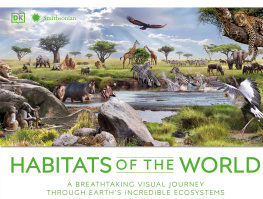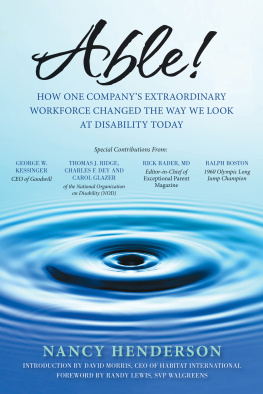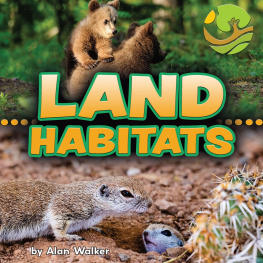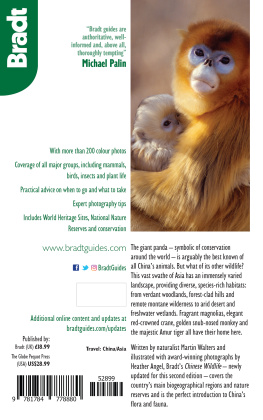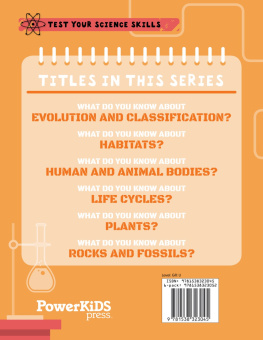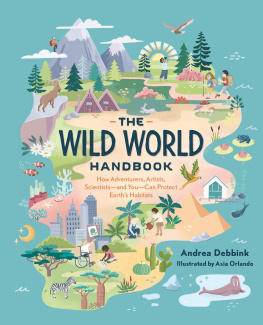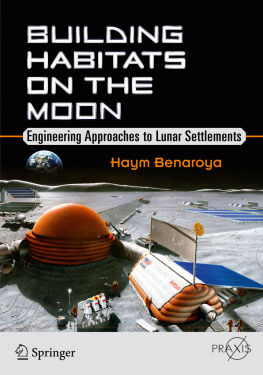
SECRETS OF HABITATS

ANDREW SOLWAY

E-book published in 2012 by Encyclopdia Britannica, Inc., in association with Arcturus Publishing Limited, 26/27 Bickels Yard, 151-153 Bermondsey Street, London SE1 3HA. Britannica, Encyclopdia Britannica, and the Thistle logo are registered trademarks of Encyclopdia Britannica, Inc.
ISBN 978-1-61535-631-7 (e-book)
This edition first published in 2011 in the United States of America
by MARSHALL CAVENDISH BENCHMARK
An imprint of Marshall Cavendish Corporation
Copyright 2010 Arcturus Publishing Limited
This publication represents the opinions and views of the author based on Andrew Solways personal experience, knowledge, and research. The information in this book serves as a general guide only. The author and publisher have used their best efforts in preparing this book and disclaim liability rising directly and indirectly from the use and application of this book.
All rights reserved. No part of this publication may be reproduced, stored in a retrieval system, or transmitted in any form or by any means, electronic, mechanical, photocopying, recording or otherwise, without the prior written permission of the copyright owner.
Planned and produced by Discovery Books Ltd., 2 College Street, Ludlow, Shropshire, SY8 1AN www.discoverybooks.net
Managing editor: Paul Humphrey
Editor: Clare Hibbert
Designer: sprout.uk.com Limited
Illustrators: Peter Bull (page 9), Stefan Chabluk, Stuart Lafford (page 6)
Picture researcher: Tom Humphrey
Photo acknowledgments: Corbis: pp 7 (Seth Resnick/Science Faction), 15 (Christophe Boisvieux), 18 (Tony Waltham/Robert Harding World Imagery), 27 (Steven Kazlowski/Science Faction), 28 (Martin Harvey); FLPA: p 24 (Nigel Cattlin); Getty Images: pp 11 (Zeb Andrews), 12 (Grambo), 14 (Tom Brakefield), 16 (Michael Fogden), 20 (Masaaki Tanaka / Sebun Photo), 25 (Coke Whitworth); IStockphoto: cover desert (gioadventures), cover cactus (jlvphoto), cover tree frog (Snowleopard1), pp 1 and 8 (Edwin van Wier), 17 (Liz Leyden), 22 (Peter Muckherjee), 26 (David Hills); Shutterstock Images: pp 5 (Chris Curtis), 19 (Danny Warren), 21 (Simone van den Berg), 23 (Vaklav).
No part of this publication may be reproduced, stored in a retrieval system or transmitted, in any form or by any means, electronic, mechanical, photocopying, recording, or otherwise, without the prior permission of the copyright owner. Request for permission should be addressed to the Publisher, Marshall Cavendish Corporation, 99 White Plains Road, Tarrytown, NY 10591. Tel: (914) 332-8888, fax: (914) 332-1888.
Website: www.marshallcavendish.us
Other Marshall Cavendish Offices:
Marshall Cavendish International (Asia) Private Limited, 1 New Industrial Road, Singapore 536196 Marshall Cavendish
International (Thailand) Co Ltd. 253 Asoke, 12th Flr, Sukhumvit 21 Road, Klongtoey Nua, Wattana, Bangkok 10110, Thailand
Marshall Cavendish (Malaysia) Sdn Bhd, Times Subang, Lot 46, Subang Hi-Tech Industrial Park, Batu Tiga, 40000 Shah Alam, Selangor Darul Ehsan, Malaysia
Marshall Cavendish is a trademark of Times Publishing Limited
The website addresses (URLs) included in this book were valid at the time of going to press. However, because of the nature of the Internet, it is possible that some addresses may have changed, or the sites may have changed or closed down since publication. While the author, packager, and the publisher regret any inconvenience this may cause to the readers, no responsibility for any such changes can be accepted by the author, packager, or publisher.
Every attempt has been made to clear copyright. Should there be any inadvertent omission, please apply to the copyright holder for rectification.
Library of Congress Cataloging-in-Publication Data
Solway, Andrew.
Secrets of habitats / Andrew Solway.
p. cm. -- (Science secrets)
Includes bibliographical references and index.
1. Habitat (Ecology)--Juvenile literature. I. Title.
QH541.14.S67 2011
577--dc22
2010003940
1 3 6 5 4 2
Contents
What Are Habitats?
A habitat is a place where an animal or plant lives. There are many different kinds of habitat. A river is one kind of habitat, while a desert is another kind.
Shaping a Habitat
What a habitat is like depends partly on the climatethe average weather in the area over a long period of time. In a desert it rarely rains, while in rain forests it rains a lot of the time.
The kind of rocks and landscape also affect the habitat, and so do living things. A forest would not be a forest without trees.
The Biggest Habitats
Some habitats cover large areas. Oceans cover two-thirds of the earths surface, while conifer forests cover a little over one-tenth of the land area. These large habitats are known as biomes.

A map of the worlds biomes. The largest is the water biome that includes rivers, lakes, and oceans.

Monument Valley in Utah is an example of a desert habitat. It is very dry, with little plant life.
Each biome can be split into smaller and smaller habitats. For insects, the forest floor is a very different habitat from a leafy treetop.
In this book, you will discover all kinds of habitats, from rotting logs to the wide oceans. You will also learn how human beings affect habitats and the living things in them.
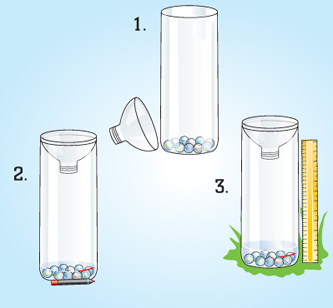

MEASURING RAINFALL
Measure the rainfall in a local habitat for one month. The amount of rainfall affects what the habitat is like.
You will need:
a small plastic bottle some marbles some water a permanent marker a ruler a pen a notebook
1. Ask an adult to cut the top off the bottle. Put a layer of marbles in the bottom to weight it down.
2. Turn the top upside down and push it into the bottle. This will cut down on water loss through evaporation. Add water to just cover the marbles. Mark the water level with the marker.
3. Put the bottle outside in an open area. After a day, use the ruler to measure from the mark to the level of the water. This is the rainfall for that day. Write it down.
4. Pour out the water (but not the marbles), and then fill up the bottle to the mark again. The next day, measure from the mark to the water level again.
5. Repeat for the rest of the month, then add up your figures. How much rain fell?
How Do Habitats Work?
Every living thing needs certain things to survive and grow. Plants need light, carbon dioxide (a gas in the air), water, and minerals (chemicals in the soil). Animals need water, food, and shelter
Next page

